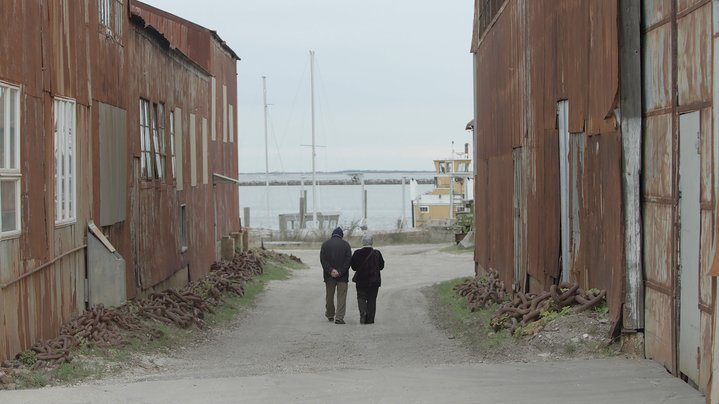Still from the film Poor Folk: Kabakovs, 2018 © Garage Museum of Contemporary Art
Not everyone will be left in the past
The greatest of the Russian conceptualists Ilya and Emilia Kabakovs look forward — and don’t hold back
In addition to his talents for painting, installation, sculpture, and catching the eye of the Western art world, Ilya Kabakov – without a doubt the most famous Russian artist in the world today – is a peerless storyteller. Perhaps this is why, in the documentary “Poor Folk: Kabakovs,” the artist states, “In fact, everything I do is a variation on Russian literature, not Russian painting.” In keeping with tradition, the story that the film paints is not a bright one, but leaves an impression no less deep than Kabakov’s works themselves.
The film exists due to a remarkable confluence of circumstances, celebrating Garage’s 10th birthday and Ilya Kabakov’s 85th, while coordinating with the long-awaited arrival of Emilia and Ilya Kabakov’s enormous retrospective at Moscow’s New Tretyakov Gallery (after its visits to the Tate Modern and St. Petersburg’s Hermitage Museum). The exhibit “Not Everyone Will Be Taken Into The Future,” provides an illuminating counterpart to the film, as both deal with Kabakov’s Soviet experience, and the impact it left on his work.
Kabakov’s way of seeing is infectious. He interrupts the serene flow of memories with an occasional, profanity-laced burst of passion as he describes, for instance, the influence that the colour of bureaucratic paper forms had on his famous text-based paintings (for example, Sobakin). However, as the story moves further along in history, Emilia offers more of her views on the present-day art world and the fate of Kabakov’s work - mirroring their real-life division of labour. Curiously, Kabakov, the great re-imaginer of Soviet life, has very little to say about his life in America. The result is a portrait of an artist that, after shaping the Western world’s perception of Soviet and Russian art through the work that he made within that failed social experiment, has inadvertently become completely walled off after that experiment’s conclusion. Unable to speak English and reliant on his wife as the “eyes and ears” of his operation, Kabakov gives off the impression of a profoundly lonely man, not so much stuck in his past as unable to come to terms with the present to which it yielded. For all of the clever irony and unbridled imagination that Soviet Kabakov found in his native windows, bugs, and wardrobes, American Kabakov seems quite content to read in his armchair.
In the film, director Anton Zhelnov’s work underscores this sense of longing. His long, searching shots of Kabakov at home, in his studio, or in the outside world smack of the supernatural, as though the artist were a ghost ambling about his old haunting grounds in search of. . .what? Old souvenirs? Childhood knick knacks? A snack? As Emilia shops for souvenirs in a Long Island town, Ilya sits outside, alone, expressionless, and anonymous—hardly even noticeable to passers by, let alone recognizable as one of the great artists of the modern age.
Kabakovs’ retrospective is on show at the Tretyakov Gallery until January 13, 2019.







